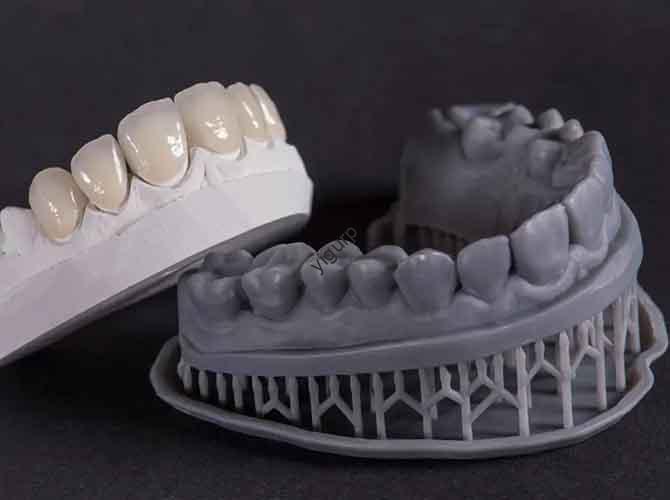Dans le monde de la fabrication au rythme rapide d'aujourd'hui, comment les designers transforment-ils des idées folles en tangibles, objets performants? La réponse réside dans 3D impression de modèles créatifs—une technologie qui allie liberté de conception, flexibilité matérielle, et personnalisation pour redéfinir ce qui est possible. Cet article explique comment ces modèles résolvent les problèmes de l'industrie, leurs principaux avantages, Utilise du monde réel, et ce que l'avenir nous réserve.
Que sont exactement les modèles créatifs d’impression 3D?
UN 3D printing creative model is a unique three-dimensional object crafted via 3D printing technology, designed to go beyond the limits of traditional manufacturing. Unlike conventional methods (Par exemple, moulage par injection) that require expensive molds and struggle with complex shapes, these models start as digital designs and are built layer by layer—turning creativity into reality with minimal constraints.
5 Principaux avantages des modèles créatifs d’impression 3D
Why are more industries adopting 3D printing creative models? Below is a table highlighting their biggest benefits, along with how they solve common problems:
| Avantage | Comment cela résout les problèmes | Exemple du monde réel |
| High Design Freedom | Eliminates “unprintable” shapes; lets designers create organic or geometric structures. | An architect designing a curved building facade—no need to simplify the design. |
| Diversité matérielle | Matches materials to model needs (force, flexibilité, apparence). | A dentist using biocompatible resin to print a custom tooth crown. |
| Prototypage rapide | Cuts product development time from weeks to days. | A car company testing 10 different dashboard designs in 3 jours (contre. 1 month prior). |
| Personnalisation personnalisée | Tailors models to individual user needs (taille, fonction, style). | A prosthetics maker creating a leg that fits a patient’s unique body shape. |
| Cost-Effective Small Batches | No mold costs—ideal for 1 to 100-unit production runs. | Une imprime de startup 50 limited-edition phone cases without upfront investments. |
Où sont utilisés les modèles créatifs d’impression 3D?
Their applications span nearly every industry, solving unique challenges in each. Voici 4 key sectors with concrete use cases:
- Architecture: Architects use 3D printed models to showcase building details (Par exemple, cadres de fenêtre, escaliers) that 2D drawings can’t convey. Par exemple, a firm in Berlin printed a 1:50 scale model of a museum—allowing clients to “walk through” the design and spot flaws early.
- Médical: Customization saves lives here. Doctors use patient scans to print 3D-printed implants (Par exemple, remplaçants de la hanche) or surgical guides. UN 2023 study found these models reduce surgery time by 30% en moyenne.
- Aérospatial: Léger, complex parts are critical. NASA printed a rocket engine component that was 40% lighter than its metal-cast counterpart—cutting fuel costs for space missions.
- Automobile: Car manufacturers test new parts (Par exemple, poignées de porte, supports de moteur) rapidement. Tesla used 3D printing to prototype a cybertruck component in 24 heures, speeding up its launch by 6 mois.
How Do 3D Printing Creative Models Drive Innovation?
Innovation thrives when ideas can be tested fast—and 3D impression de modèles créatifs act as a “innovation accelerator.” Here’s a simple 因果链 (chaîne de cause à effet) to explain:
- Designer has an idea → 2. Creates a digital model (1–2 jours) → 3. Prints a prototype (heures) → 4. Tests and adjusts (1 jour) → 5. Finalizes the product (1 week total).
Compare this to traditional manufacturing:
- Designer has an idea → 2. Creates a mold (2–4 semaines, $10k+) → 3. Produces a prototype (1 semaine) → 4. Adjusts the mold (another 2 semaines) → 5. Finalizes the product (2+ months total).
The difference is clear: 3D printing slashes the “idea-to-product” cycle, letting companies iterate faster and stay ahead of competitors.
Future of 3D Printing Creative Models
What’s next for this technology? Industry experts predict three key trends by 2027:
- Material Expansion: More sustainable options (Par exemple, recycled plastic, algae-based resin) will become mainstream.
- Faster Printing: Nouvelles technologies (Par exemple, Sla 3.0) will reduce print time for large models by 50%.
- AI Integration: AI will help designers optimize models for strength and cost—e.g., an AI tool that suggests material tweaks to make a part 20% lighter without losing durability.
Perspective de la technologie Yigu
À la technologie Yigu, nous croyons 3D impression de modèles créatifs are not just a tool—they’re a catalyst for democratizing innovation. Small businesses and independent designers now have the same prototyping power as large corporations, leveling the playing field. We’ve seen clients use our 3D printing solutions to launch products (from custom toys to medical devices) in half the time of their competitors. À mesure que les matériaux et la vitesse s'améliorent, we expect these models to become a standard step in every product’s development journey.
FAQ
- Q: How much does it cost to print a 3D creative model?
UN: Les coûts varient selon la taille, matériel, et la complexité. A small plastic model (Par exemple, un porte-clés) peut coûter \(5- )20, tandis qu'une grande partie métallique (Par exemple, an aerospace component) peut coûter \(500- )5,000.
- Q: Can 3D printing creative models be used for mass production?
UN: They’re best for small batches (1–100 unités) due to speed limits. Pour la production de masse (1,000+ unités), traditional methods like injection molding are still more cost-effective—though 3D printing is improving for mid-volume runs.
- Q: What skills do I need to create a 3D printing creative model?
UN: Basic knowledge of 3D design software (Par exemple, Tinkercad for beginners, Fusion 360 for advanced users) is enough to start. Many online tutorials (Par exemple, YouTube, Coursera) can teach you the basics in 1–2 weeks.
